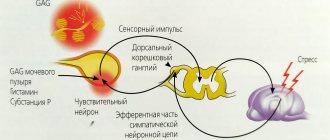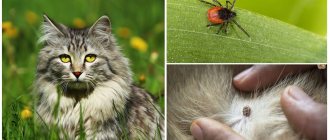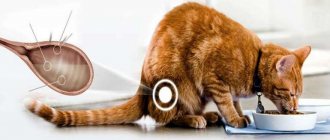What worms do cats have?
Worms are divided into different classes and forms, so they reproduce and feed differently. Now we will briefly talk about the main parasites that interfere with the lives of not only cats, but also their owners.
Liver fluke. This enemy chose the liver as his permanent residence. Symptoms: the cat refuses to eat, the vomit turns light yellow, the temperature rises to 40 degrees Celsius.
Liver fluke
Lungworms. They settle in furry fur if your pet drinks water from contaminated sources. Symptoms: loss of appetite, regular dry and wheezing cough, fever accompanied by elevated temperature.
Hookworms. Usually these inhabitants settle in the intestines and feed on blood. Their body length is up to 2 millimeters. Eggs are delivered to the body with food. But the larvae are so tiny that they can get into the cat through the skin. Symptoms of infection: depression, lack of appetite, severe cough and vomiting, and diarrhea interspersed with blood.
Hookworm
Causative agents of alveococcosis. They settle in the body of cats mainly due to eating small animals and rodents. During their life, helminths grow no more than 5 millimeters in length. There is no threat to the cat from these cohabitants, but if the parasite gets into the human body, then there will be a big problem. The fact is that when parasites reproduce, they form metastases. But most often a tumor forms in the liver. There are no symptoms of settlement, so they are very difficult to detect.
Alveococcosis
Cucumber tapeworm. He also gets along with people easily. Having reached sexual maturity, the parasite grows up to 25 cm. The danger lies in the fact that it partially eats the walls of the gastrointestinal tract. Therefore, the damage may not last long. Symptoms: the pet becomes aggressive, he stops eating (this causes him to lose a lot of weight), his stomach growls almost all day long.
Cucumber tapeworm
Toxocars. These parasites are mainly localized in the esophagus, liver or gall bladder. They can grow up to 4-5 cm. There are known cases when kittens became infected from their mother in the womb. Therefore, these worms pose a great danger to unborn kittens. There are no symptoms.
Wide tape. If the parasite takes root in the human body, it can grow up to 10 m, and in cats it grows up to 5 m. It is possible to become infected from river water or by eating crayfish. The main symptoms of infection: severe vomiting, loss of interest in food, diarrhea.
Broad tapeworm
The damage that worms cause to a cat's body
Worms living in the body of a pet harm it in different ways.
- Worms feed on the blood, tissues and lymph of their host.
- Helminths produce substances that lead to intoxication of the cat’s body.
- When the parasite dies, its decomposition products also poison your pet's body.
- The suckers with which worms attach to organs can damage the mucous membranes of internal organs. This may lead to internal bleeding.
While there are few parasites, the animal may not notice their presence in its body. But a large number of worms can significantly deplete the body. And a constant increase in the number of helminths will sooner or later lead to the death of the cat.
Signs of worms in a cat
All types of helminthiasis are accompanied by symptoms, regardless of the location of the parasites:
- Loss of interest in food or, conversely, increased gluttony.
- Severe weight loss (a pet can lose 30% of its body weight within 2 weeks after infection).
- Digestive disorders (constipation, diarrhea).
- Dermatoses, a rash or peeling may appear on the skin.
- Faded wool.
- Strange behavior (the pet may behave sluggishly for several days, and then become very aggressive the next).
In adult cats, when infected, there are practically no symptoms of helminthiasis. Worms make themselves felt only when their number increases significantly. And therefore, difficult diagnosis of the disease often has a detrimental effect on the health of the furry. Therefore, try to notice even minor deviations in your pet’s behavior, then you can begin treating your cat for worms.
Signs of cat worms
General symptoms of parasites in a cat
Signs can be general, which are characteristic of almost all types of parasites, and specific. If we talk about general symptoms, then this is weakness, disruption of the intestines (constipation or diarrhea), the stomach swells, becomes tight, like a drum.
Almost always, the presence of parasites is “reflected” on the coat, it becomes dull, lifeless, and falls out. And often the eyes begin to fester.
The smell from the mouth is extremely unpleasant, and itching of the anal sphincter often occurs. Appetite disappears, although some parasites suck the cat's strength and energy so much that he has to eat a lot. However, despite the large volumes of food eaten, the animal is exhausted.
Agree that infection or worms in cats, whose general symptoms are mostly similar, are very easy to confuse. In addition, helminths reduce immunity, so any infection “clings” to the cat.
And then the signs of infectious and parasitic diseases are mixed, which complicates the diagnosis.
That is why it is important to carry out preventive deworming on time, as well as closely monitor the health of your cat.
Routes of infection
All worms have a different cycle and habitat, then we will tell you how parasites enter the body of cats:
- The cucumber tapeworm is a very insidious parasite, as it is carried by other parasites - fleas. When tapeworm eggs mature, they are released along with feces. After this, the outer shell peels off the eggs, and fleas eat these eggs. A pet becomes infected if it swallows a flea along with its eggs.
- The pulmonary fluke first settles in snails, mollusks or other inhabitants. Then the parasite moves on to fish; cats are the last link in this chain.
- Hookworms can penetrate the skin, damaging the gastrointestinal tract.
- The broad tapeworm is somewhat similar to the cucumber tapeworm, because it also initially lives in small fish or crustaceans.
- Roundworms and Toxocara are the most typical representatives of parasites. They are excreted along with feces, and then enter other animals along with dust, dirt or water. The larvae are prepared for release into the external environment in the intestines, then they disperse throughout the circulatory system. They are then released into the lungs, and usually some of them are swallowed back by the cat.
- The life cycle of the cat fluke is similar to that of the pulmonary fluke. Because worms first develop in crustaceans or fish, and only then do cats become infected.
- Dirofilaria. Heartworm larvae are usually carried by mosquitoes, and after the insect bites them, they enter the bloodstream. They take root well in muscles, blood vessels or the heart.
- Alveococci. The temporary hosts of worms are mice or rabbits. Then they end up in cats. These helminths are very dangerous for mustaches, because they are both intermediate and permanent residents. They can grow up to 4 mm in length, then they settle in any organs (kidneys, brain, eyes, heart, etc.)
Infecting a cat with worms
The importance of regular visits to the veterinarian
It’s best to talk to your veterinarian about specific types, as you need to be careful: constant use of some medications can cause liver and lung damage. The most commonly used are Drontal, Pyrantel, Praziquantel and similar agents. They are cheap and have a good degree of effectiveness. We remind you once again - do not give your cat medications without first consulting your veterinarian! And the point here is not only the potential to poison the pet if the frequency of administration is too frequent.
The fact is that for trematodes and nematodes (flukes and roundworms, respectively) there are fundamentally different compositions. If you stuff your cat with Pirantel, for example, while the animal is suffering from opisthorchiasis, it is not at all a fact that you will be able to somehow help the animal. It is for this reason that we would strongly recommend showing your cat to a veterinarian at least once a quarter - you need to regularly conduct a stool test both to identify parasites and to accurately determine their type. This is especially true in cases where you live in an area unfavorable for parasitic diseases.
Kittens - what to do with them?
What about kittens? After all, their body is still weak, it cannot adequately resist helminthic infestation, which is why babies get sick much more often than their adult relatives. Moreover, a kitten doesn’t even have to walk outside or eat meat/fish: it could easily become infected by feeding on its mother’s milk! The fact is that the larvae of some types of helminths (many of the parasitic nematodes, for example), can hibernate while being in the mammary glands of the cat. When the organ begins to produce milk, they wake up and become active. It is for this reason that kittens must be treated against worms without fail.
The first time this is done is when they reach the age of six weeks. The second is between the eighth and tenth week. Again, you should not do this yourself; we recommend that you consult your veterinarian first. If it turns out that an already pregnant cat has parasites, it is strongly recommended to wait until the kittens are born, and then treat the mother first, and only then, upon reaching the required age, the kittens themselves. Moreover, there are often cases when a particular medicine should not enter the baby’s body at all until they reach a certain age and/or weight, and therefore (the drug can be excreted in mother’s milk) one has to wait and not carry out treatments. Otherwise, there is a high probability of poisoning both the mother and her cubs.
Diagnostics in the clinic
At home, you can determine the form of helminthiasis by eggs, parts of worms or other symptoms. At the veterinary clinic, professionals do laboratory tests:
- Using ultrasound, you can detect helminths in internal organs: kidneys, heart, liver.
- During diagnosis, stool analysis reveals the most worms. Double sampling of faeces is usually carried out because feces are small and undetectable during developmental stages.
- Using a blood test, specialists can even determine the type of parasites. After all, by the number of leukocytes you can tell whether a cat is infected or not. This is due to the fact that after infection the level of eosinophils in the blood increases noticeably.
- X-raying your pet's chest and collecting sputum for analysis can help identify lungworms.
Types of helminths
Risk factors
The fleas that infect cats live in the grass. From there they jump on warm-blooded animals and feed on their blood. These blood-sucking parasites live on all continents, even Antarctica. A cat can become infected with fleas at any time of the year.
It is important to remember the reasons why a cat is at risk of contracting parasites:
- A cat that goes outside will definitely become infected with fleas. Therefore, you should not let your pet walk on its own.
- Unlike cats, domestic dogs should be walked 2-3 times a day. If a dog brings fleas home, then all other animals will pick them up. All pets should be treated for fleas regularly.
- A person can bring fleas into an apartment on his shoes or outerwear. Only regular treatment with anti-flea products will protect your pet.
- If the cat already had fleas, but the owner did not treat the pet, then the parasites will soon appear again. Fleas lay eggs in animal fur. New parasites can hatch from these eggs at any time.
- Fleas that have already entered the apartment will settle in the thick carpet. All carpets and cat beds should be thoroughly vacuumed.
- Fleas multiply especially actively in the heat, so in the summer you will have to treat your cat several times.
Flea infestations often lead to serious complications that are detrimental to the health of cats. Flea bites always cause severe pain and excruciating itching, and also provoke the development of dangerous diseases.
Complications of flea bites:
- Anemia is a condition in which a cat does not have enough blood due to a large number of parasites. The level of hemoglobin in the blood is greatly reduced. It develops when cats are not treated for fleas. Street animals are most often affected. Very young kittens, as well as weakened, sick and elderly animals can die from anemia.
- Flea dermatitis is an allergic reaction to the saliva of parasites that enters the skin during a bite. The pet experiences severe skin irritation, so the cat constantly licks. Her hair falls out and her skin becomes crusty. Infection easily penetrates damaged skin, which can lead to blood poisoning.
- Infectious diseases - fleas can infect pets with bartonellosis or rickettsia.
- Tapeworms - by licking, a cat can swallow fleas infected with tapeworms. Because of this, worms will begin to multiply in the intestines, the pet’s well-being will worsen, and then it will have to be treated not only for fleas, but also for worms.
Parasites are especially dangerous for pregnant and lactating cats. Fleas can harm not only the mother, but also the future offspring. But during pregnancy and lactation, you cannot treat your cat with anti-flea agents, because they are toxic. Treatment must be carried out before mating.
Up to 200 fleas can live on one cat. A caring owner should treat pets for parasites 4 times a year - every 3 months. If your cat has fleas, you need to carry out additional treatment.
You might be interested in: A cat scratching its butt on the carpet: worms, inflammation or irritation?
Treatment for worms
If the cat’s condition is satisfactory, then the owners usually carry out treatment at home. Whatever worms are found in cats, in any case, drug treatment is now mainly used.
Therefore, it is important to consult an experienced veterinarian before use.
Pills
Effective anti-parasite medications include:
- Milbemax. The cost of 2 tablets per package ranges from 350-400 rubles.
- Prazicide. The price of a package consisting of 6 tablets is 140 rubles.
- Dirofen You will have to pay 110 rubles for the packaging.
- Drontal. The cost of 1 tablet for cats against worms is 70 rubles.
- Prazitel. You need to pay an average of 65 rubles per tablet.
The tablet should be given to pets as follows: open the cat’s mouth, and then place the tablet on the root of the tongue. His swallowing reflex will work, so he will swallow the drug without assistance. If the cat categorically refuses to take the entire tablet, then it can be crushed and added to the food.
Drops
Drops are a very convenient form of the drug. Veterinarians also prescribe drops to get rid of fleas and lice. Common anthelmintic drops:
- Stronghold (price starts from 250 rubles, depending on the region of Russia it can vary by 5-10%).
- Profender (400 rubles).
- Lawyer (this is one of the most expensive means, since you will have to pay more than 1000 rubles for a bottle).
- Prazicide (270 rubles).
It is best to apply the medicine against worms on the withers, since in this place the pet will not lick the drops.
Suspensions
- Pirantel. For a 15-milliliter bottle you need to pay 50 rubles.
- Prazicide. The price of a 7 ml bottle is approximately 100 rubles.
- Prazitel. A single dosage of the suspension costs around 140 rubles.
Veterinarians recommend adding suspensions to food. Because when poured into the mouth, the cat will most likely spit the medicine back out.
Solution for injection
Pets can be treated not only with suspensions and tablets; injections also do an excellent job with this task. For example, buy the effective drug Novomek. Its price is 90 rubles for a 10 ml bottle.
If you do not have experience in giving intramuscular injections to animals, then it is better to leave this work to professionals.
Prevention methods
Pet hygiene
Fleas on cats are carriers of helminths. Therefore, first of all, it is necessary to remove small bloodsuckers from the animal’s fur. For this purpose, veterinary drugs are used or traditional medicine methods are used. It is also necessary to disinfect the room where the pet lives with special means. If this is not done, then treatment for helminths is pointless, since the cat will become infected again. You should not forget to disinfect cat hygiene items: toilet area, combs and scratching post.
Anthelmintics
The drug Febtal is well tolerated by pets and is suitable even for kittens.
Before you start fighting parasites with veterinary means, you should consult a veterinarian. He will select the correct dose of anthelmintic medication, which is important for a good result of therapy. For prevention and treatment, the following drugs are prescribed:
- "Drontal." An anti-helminth agent that has a wide spectrum of action. According to the instructions, the cat is given 1 tablet per 4 kg of body weight. For worms in kittens, ¼ tablet is prescribed starting from the age of 6 months.
- "Troncil-K". Anti-worming tablets that are prescribed to pregnant cats 10 days before the due date. They are well tolerated, but only act against round and tapeworms.
- "Pratel." The tablets have a strong effect, but have many contraindications and are difficult to tolerate. They should not be used for anthelmintic therapy for older cats, pregnant cats and small kittens.
- "Febtal." Side effects rarely occur after using this remedy, so it can be prescribed to kittens over three weeks of age. The tablets are given in the morning before meals, 1 capsule per 1.5 kg of weight. The procedure is repeated 3 days in a row.
- "Milbemax". The drug has a strong effect and helps with very severe cases of helminth infestation of a pet. The dose is determined by the veterinarian based on the animal’s body weight. These tablets contain food additives with the taste of meat, so the cat eats the medicine with pleasure.
Folk remedies
A good result can be obtained by adding a little crushed pumpkin seeds to the animal’s food.
Anthelmintic therapy is done using traditional medicine. The list of effective medications includes the following recipes:
- Tansy. Add 50 g of dried plant flowers to 200 ml of boiling water and leave for 2 hours. This solution in an amount of 25 ml is given to the cat to drink 3 times a day before meals.
- Pumpkin seeds. They have a strong anthelmintic effect and also destroy helminth eggs. Pumpkin seeds are peeled, ground into powder and added to food. Give 5 grains of vegetable every day.
- Sagebrush. An alcohol tincture is made from the plant as a medicine for worms. Pour a glass of alcohol into 50 g of dry crushed grass. The container with the solution is infused for a week in a cool, dark place. 1 hour before eating, the animal is given 10 drops of tincture. The procedure is repeated 2 times a day.
The chief physician of the As Vet clinic, Candidate of Biological Sciences Sergei Konyaev, recommends using drugs with a wide spectrum of action to remove all common types of parasites in order to prevent worms. Information on the website: www. pet4me.ru/mnenie-eksperta/glisty-u-koshek-i-sobak-otvechaet-ekspert.
Proper nutrition
If cats are given only ready-made dry food, then they will not become infected with worms. But there will be problems with the gastrointestinal tract and kidneys. Therefore, you need to feed your pet various fortified foods. When preparing food for a pet, to prevent the cat from developing worms, it is necessary to heat-treat fish, meat and offal. They are boiled or steamed for several minutes. When feeding an animal with such products once a month, helminth prevention should be carried out.
Is it possible to get worms from a cat?
Many furry owners are interested in the following question: can worms from a cat enter the human body? Of all the types of parasites, approximately 30 of them pose a danger to humans. Here are some of them:
- Echinococcus.
- Cestodes.
- Roundworms.
- Cucumber tapeworm.
This is why it is so important to adhere to some hygiene rules:
- Wash your hands after contact with pets.
- Control food preparation.
- Regularly prevent worms in cats.
Routes of infection
Prevention against worms
To reduce the possible likelihood of cats becoming infected with parasites, you should adhere to the following recommendations:
- Never allow infected pets near healthy ones, as worms can be transmitted in many ways.
- Store outdoor shoes in locked cabinets so your cat won't have access to them. Because many eggs are brought into the house from the external environment on the sole.
- Change your fluffy's tray regularly, and wash it with cleaning products at least once every 2 months.
- When you come home from work or school, before petting your pet, you need to wash your hands thoroughly.
- Don't let your cat lick your face as there may be eggs on the tongue. After all, infected cats often lick the anus, and many worm larvae accumulate on it.
- If you are going to carry out mating, then you need to carry out unscheduled deworming of both partners.
- It is important to keep your cat’s bowl clean and also monitor the expiration dates of foods. You should eliminate raw meat and fish from your diet.
- Shoe mats need to be washed regularly, as furries also love to walk on them.
Do not forget to systematically deworm your pets, and then you will save them from many difficulties. We wish you all the best!
Treatment of kittens
If a pregnant cat has been infected with helminths, then the kittens can become infected from the sick mother in utero or after birth. Before you start treating kittens with one drug or another, you must carefully read the instructions or consult a veterinarian.
The drug is dosed according to weight. The wrong dosage can cause irreparable consequences, the worst of which may be the death of the kitten.
A good drug can be called:
- Milbemax,
- Drontal,
- Prazicide suspension,
- Dirofen.
But there are others. Typically, treatment in kittens begins no earlier than ten days of age.











